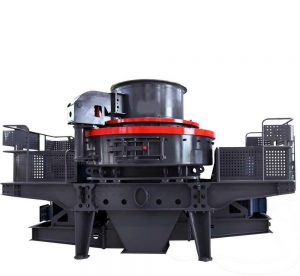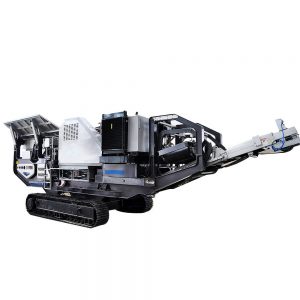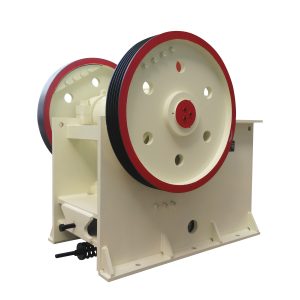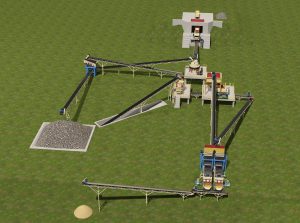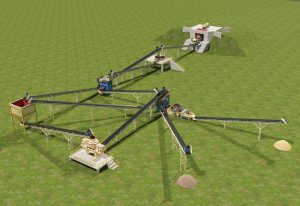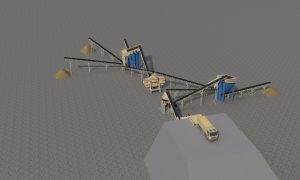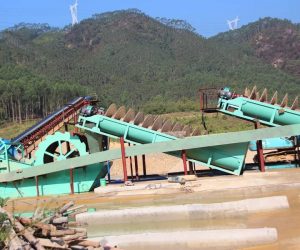How to Produce High-Quality Dolomite Powder?
Dolomite, a type of limestone, is a carbonate mineral composed of calcium magnesium carbonate (CaMg(CO3)2). This versatile mineral has wide applications across various industries, including agriculture, construction, and manufacturing. As a mining equipment manufacturer in Jiangxi Province, China, understanding the production of dolomite powder is essential for optimizing your operations and meeting market demands. This blog explores the basics of dolomite, the process of dolomite powder production, and how to design an efficient processing plant.
What is Dolomite?
Dolomite is a naturally occurring mineral that forms from the alteration of limestone or through the deposition of calcium and magnesium-rich solutions. Its composition includes:
- Calcium Carbonate (CaCO3): Provides essential plant nutrients and is crucial in many industrial processes.
- Magnesium Carbonate (MgCO3): Enhances the properties of materials.
Dolomite is typically found in sedimentary rock formations and has a variety of applications, including:
- Agriculture: It is soil conditioner and fertilizer. It helps to improve soil pH and provides essential nutrients to crops. It can also mitigate soil acidity, thereby promoting better crop yields.
- Construction: It is vuilding material, aggregate, and flux in producing iron and steel. Its strength and durability make it ideal for concrete and asphalt.uilding material, aggregate, and flux in producing iron and steel. Its strength and durability make it perfect for concrete and asphalt.
- Manufacturing: This can be applied in glass and ceramics as a filler in plastics and paints. Its chemical properties enhance the quality of these products and improve their performance.
The demand for dolomite has increased significantly over recent years due to its versatile applications across different sectors. Consequently, understanding the production process is crucial for manufacturers aiming to meet market needs.
Dolomite Powder Processing Plant Flow Chart
Designing a dolomite powder processing plant requires careful planning and consideration of various factors, including production capacity, equipment selection, and workflow efficiency. Here’s a step-by-step guide to creating an effective flow chart for dolomite powder production:
Mining and Extraction
The first step in the production process is the mining of dolomite.
Open-pit mining: This method is suitable for surface deposits and involves removing the overburden to access dolomite reserves. It is typically more cost-effective and easier to manage than underground mining.
Underground mining: Usually in deeper underground. It involves creating tunnels to reach the mineral.
Crushing and Screening
The dolomite is transported to the processing plant and undergoes crushing and screening to achieve the desired particle size. This stage typically involves:
Primary crushing: Large dolomites are crushed into smaller pieces by a jaw crusher. This initial reduction is essential for preparing the material for further processing.
Secondary crushing: The smaller pieces go through a cone or impact crusher. It ensures that the dolomite meets the specific size requirements for milling.
Screening: The crushed dolomite goes to vibrating screen to separate fine particles from larger ones, ensuring uniformity in size. This step is critical for achieving the desired product specifications.
Grinding and Milling
After crushing, the dolomite is subjected to grinding and milling to produce dolomite powder. This process can involve:
Ball Mills: The ball mill rotates to grind the material using steel balls. Ball mills are effective for producing fine powders and can handle large volumes of material.
Raymond Mills: Ideal for producing ultra-fine dolomite powder, these mills combine crushing and grinding to achieve the desired fineness. They are particularly efficient for materials that require a specific particle size distribution.

Air Classification
Air classification ensures the dolomite powder meets specific particle size requirements. This process involves:
Cyclones: These devices separate particles based on size and density, allowing for the collection of fine dolomite powder while returning larger particles for further grinding. Cyclones are essential for maintaining the quality and consistency of the final product.
Dust Collectors: To maintain air quality and minimize dust emissions during processing. It protects the health of workers and ensures compliance with environmental regulations.
Bagging and Storage
The final stage of the production process involves packaging the dolomite powder for distribution. It includes:
Bulk Bags: Bulk bags store and transport dolomite powder easy handling and transportation.
Sack Filling: Smaller bags for retail distribution. Automated sack-filling machines can streamline this process, improving efficiency and reducing labor costs.
Quality Control
Quality control measures should be in place to ensure that the dolomite powder meets industry standards. It may involve testing for:
Chemical Composition: Ensuring the correct ratio of calcium and magnesium is crucial for the intended applications of the dolomite powder.
Particle Size Distribution: Verifying that the powder meets specifications for its intended use is essential for product performance.
Impurities: Checking for unwanted materials that could affect the quality of the final product is critical for maintaining customer satisfaction.
Dolomite Powder Processing Plant Equipment
Several key machines are necessary to facilitate the production of dolomite powder. Here’s a breakdown of the essential machinery:
Mining Equipment
Excavators: Removing overburden and digging dolomite. These machines are crucial for efficient extraction.
Dump Trucks: Transporting mined dolomite to the processing plant. Heavy-duty trucks are essential for moving large volumes of material.
Crushing Equipment
Jaw Crusher: For primary crushing of large dolomite boulders. It is known for its reliability and efficiency in reducing large rocks to manageable sizes.
Cone Crusher: Secondary crushing to achieve smaller particle sizes. Cone crushers are effective for producing uniform granules.
Vibrating Screens: Separating different sizes of dolomite.
Grinding Equipment
Ball Mill: Grinding crushed dolomite into fine powder. Ball mills are known for their ability to produce consistent particle sizes.
Raymond Mill: Producing ultra-fine dolomite powder. This machinery is useful for applications requiring fine material.
Air Classification Equipment
Cyclone Separators: For separating fine dolomite powder from larger particles. Cyclones enhance efficiency and product quality.
Dust Collectors: To maintain air quality and minimize dust emissions during processing. This machine is crucial for worker safety and environmental compliance.
Packaging Equipment
Bulk Bag Fillers: Filling large bags with dolomite powder. These machines is suitable for speed and efficiency in bulk handling.
Automatic Sack Fillers: Packing smaller bags. Automation in this area can reduce labor costs and improve output.
Conclusion
The dolomite powder production is a complex process that requires careful planning, efficient design, and the right machine. By understanding the characteristics of dolomite and following a well-structured flow chart, manufacturers can optimize their operations to meet the growing demand in various industries.
Investing in the right machinery and maintaining quality control throughout the production will ensure a high-quality end product that meets market standards. As a mining equipment manufacturer in Jiangxi Province, China, understanding these processes enhance your production capabilities and position your company as a leader in the dolomite market.
By focusing on efficient extraction, processing, and quality control, you can ensure that your dolomite powder meets the diverse needs of your customers while maximizing profitability.
Eastman is a professional mining equipment manufacturer with 38 years of rich experience in the mining construction industry. We can also provide lab equipment. Welcome to consult our professional team to get factory prices. According to your situation and product requirements, we will design a complete sand-crushing production line flow chart and provide an accurate quotation.
